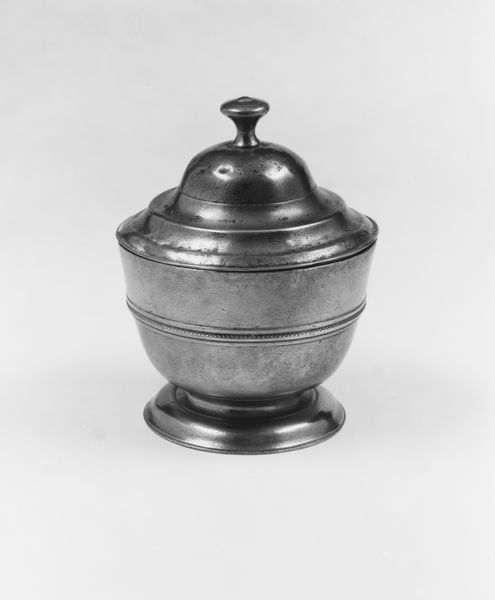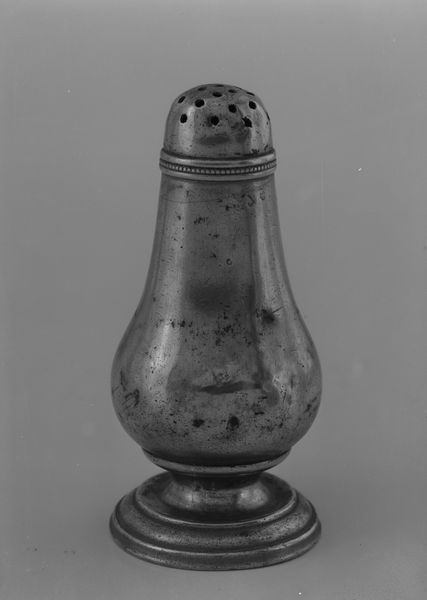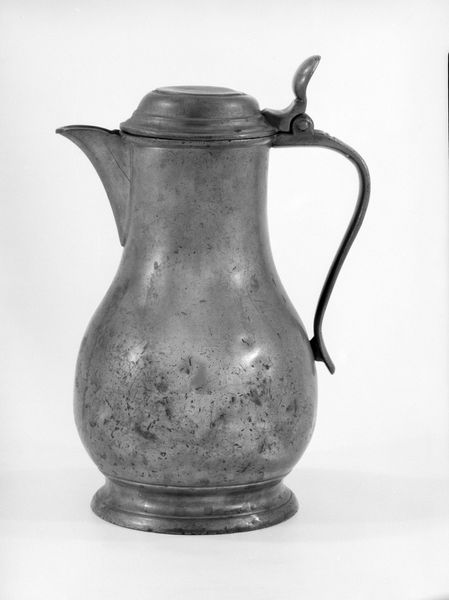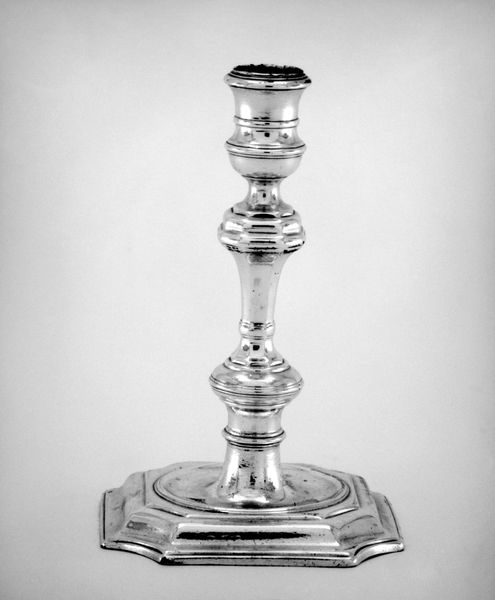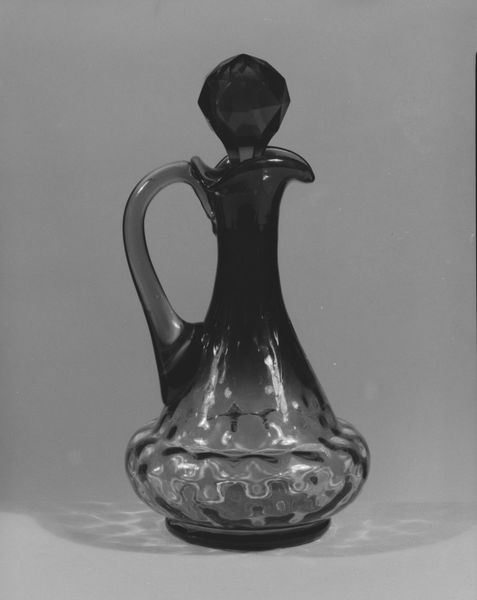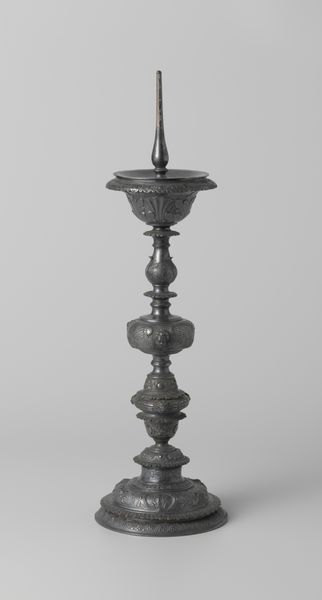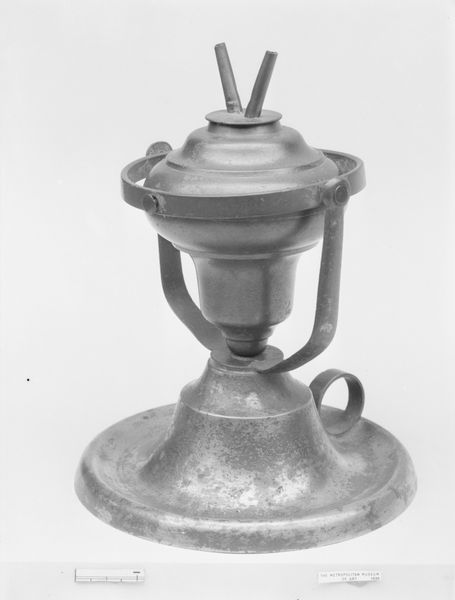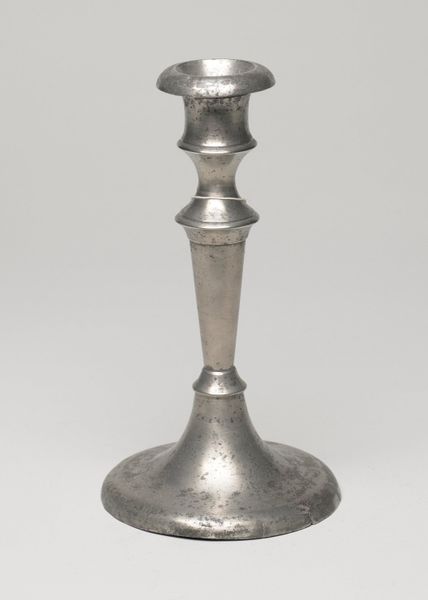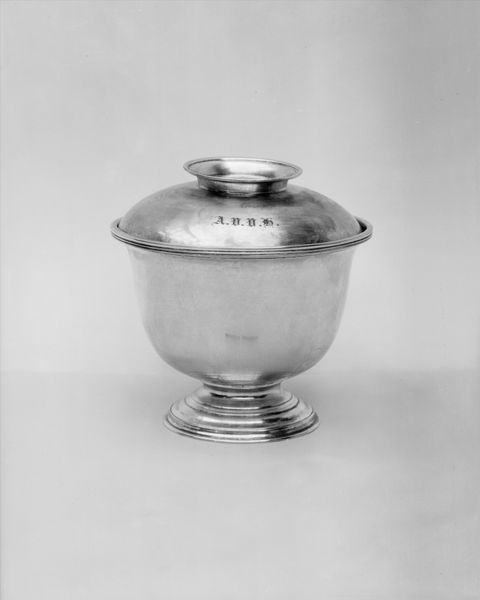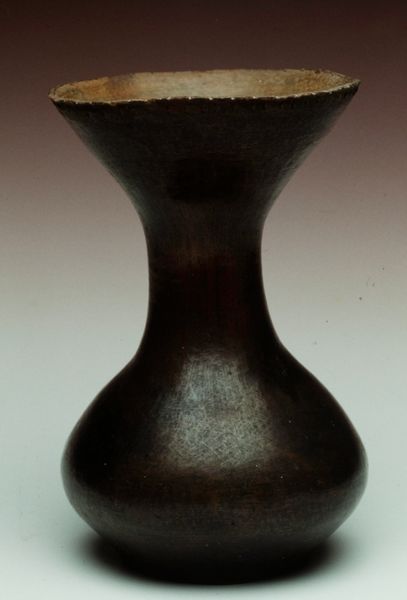
metal, sculpture
#
metal
#
sculpture
#
sculpture
#
decorative-art
Dimensions: H. 5 1/8 in. (13 cm)
Copyright: Public Domain
This chamber candlestick, now in the Metropolitan Museum of Art, was made by Henry Hopper in the early 1840s from pewter. Pewter is an alloy, mostly tin, with small amounts of other metals like copper or antimony added for strength. The candlestick would have been cast in a mold, perhaps in several parts then soldered together. Look closely, and you can see slight imperfections in the surface, a testament to the hand-finishing that followed the casting process. The handle, convenient for carrying the light from room to room, is a particularly nice detail. Pewter was a common material for domestic objects in the 19th century, prized for its affordability and workability. Unlike silver or gold, pewter allowed a wider segment of the population to own attractive, functional objects. It wasn't a precious metal, but it was durable and could be formed into a variety of shapes. Considering this candlestick, it's clear that even everyday objects can reflect significant social and economic realities. It challenges us to look beyond mere aesthetics and consider the role of materials and making in our understanding of the past.
Comments
No comments
Be the first to comment and join the conversation on the ultimate creative platform.
